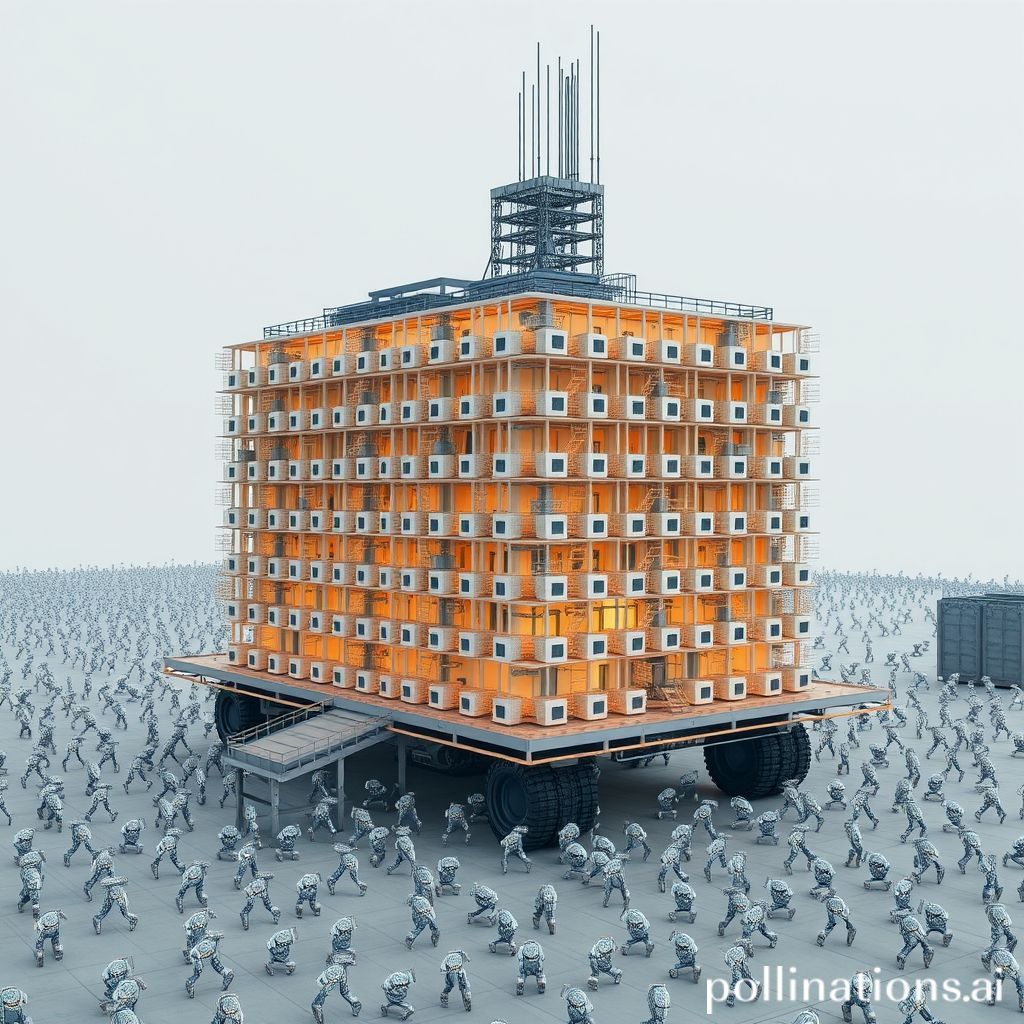
Hundreds of tiny robots move 7,400 tonne building complex
Moving Mountains (of Concrete): The Incredible Story of Self Propelled Modular Transporters and the Jinghua School
Hey everyone welcome back to the blog! Today, we re diving into a story that feels straight out of a science fiction movie but is absolutely real a tale of engineering ingenuity where hundreds of tiny robots teamed up to move a colossal building complex. Forget cranes and demolition balls this is about precision, power and a whole lot of synchronized movement.
The Jinghua School Relocation: A Herculean Task
The project in question involves the Jinghua School a massive educational complex in Shanghai China. Due to urban redevelopment the entire complex weighing a staggering 7400 tonnes (that's roughly the weight of 50 Boeing 747 airplanes!) needed to be relocated. Now, you might be thinking "Okay, they'll just tear it down and rebuild." But that's where the brilliance of the solution comes in. Instead of demolition engineers opted for a more sustainable and incredibly innovative approach moving the entire structure intact.
Enter the Self Propelled Modular Transporter (SPMT)
The heroes of our story are not human laborers but hundreds of self propelled modular transporters or SPMTs. These aren't your average robots. SPMTs are specialized platforms equipped with multiple wheels each individually controlled by hydraulics and computers. This allows them to move in any direction rotate on the spot and precisely adjust their height all while bearing incredible loads.
Think of them as super strong robotic roller skates that can be configured to fit almost any size or shape of object. In the case of the Jinghua School approximately 200 SPMTs were carefully positioned beneath the building complex acting in perfect unison.
How it Works: A Symphony of Synchronization
The magic lies in the coordination. Each SPMT is connected to a central control system. Operators use sophisticated software to program the desired movement path taking into account factors like ground conditions weight distribution and potential obstacles. The computer then sends precise instructions to each SPMT ensuring they all move in perfect synchronization. It's like watching a perfectly choreographed dance only instead of dancers we have hundreds of powerful robots and a building as their partner.
The building was lifted very slowly and then moved across a distance of around 61 meters to its new foundation. The entire process took several days of careful maneuvering.
Why Choose This Method? The Advantages of SPMTs
While the SPMT method might seem like something out of a futuristic movie there are several compelling reasons why it was chosen for the Jinghua School relocation:
Preservation: The most obvious benefit is the preservation of the existing structure. Demolishing and rebuilding would have been far more time consuming expensive and environmentally damaging.
Sustainability: Moving the building intact reduces construction waste and the need for new materials making it a more sustainable option.
Time Efficiency: While the initial setup and planning are complex the actual moving process can be faster than demolition and reconstruction especially for large intricate structures.
Minimal Disruption: The SPMT method minimizes disruption to the surrounding area compared to traditional construction methods.
SPMTs vs Traditional Methods: A Quick Comparison
To really understand the impact of SPMTs let s compare them to traditional building moving methods:
| Feature | SPMTs | Traditional Methods (Cranes, Demolition) |
||||
| Structure Integrity | Preserved | Often Demolished/Rebuilt |
| Environmental Impact| Lower Waste Reduced Material Use | Higher Waste More Material Use |
| Time Efficiency | Can be Faster for Large Structures | Varies Dependent on Complexity |
| Disruption | Minimal | Potentially High |
| Cost | High Initial Investment Long Term Savings| Can be Expensive Overall |
Beyond Shanghai: The Future of SPMT Technology
The Jinghua School relocation is just one example of the incredible potential of SPMT technology. These robotic movers are being used for a wide range of applications including:
Moving bridges and other large infrastructure components
Transporting heavy machinery and equipment in industrial settings
Relocating historical buildings and landmarks
As technology continues to advance we can expect to see even more innovative uses for SPMTs in the future. Imagine entire neighborhoods being relocated to adapt to changing environmental conditions or modular buildings being easily reconfigured to meet evolving needs.
A Reflection on Innovation
The story of the Jinghua School and the SPMTs is more than just an engineering marvel it's a testament to human ingenuity and our ability to solve complex problems with creative solutions. It challenges us to think outside the box to consider new approaches and to embrace technology as a tool for progress. It reminds us that even the most seemingly impossible tasks can be achieved with the right combination of innovation collaboration and a little bit of robotic muscle. It also makes you wonder what else we could move with these incredible machines! Perhaps your neighbor s house? (Just kidding!) What innovative tech stories inspire you? Let me know in the comments below!

0 Comments:
Post a Comment